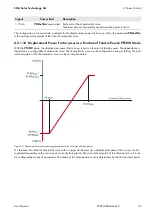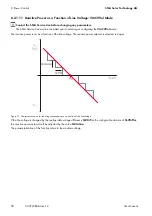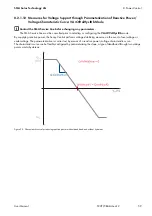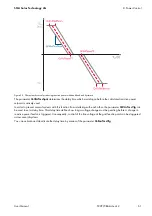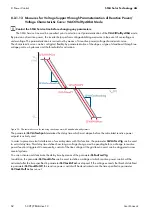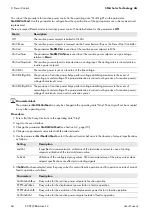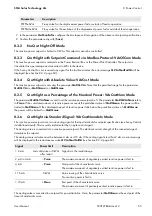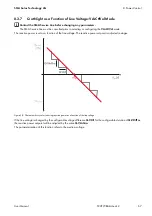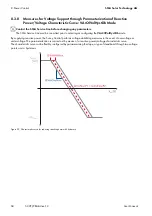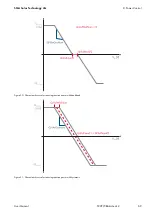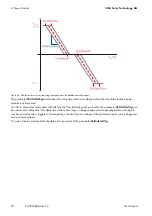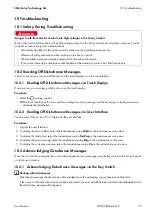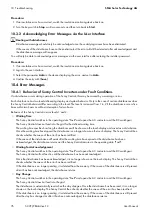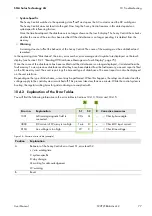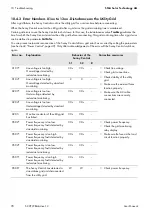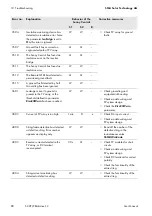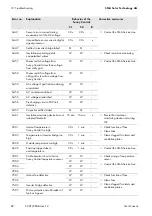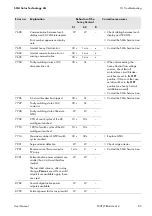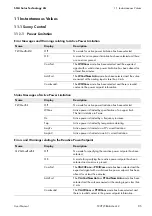
SMA Solar Technology AG
8 Power Control
User Manual
SCCP-JP-BA-A4-en-12
71
8.3.9 Measures for Voltage Support through Parameterization of Reactive
Power/Voltage Characteristic Curve: VArCtlVolHystDbA Mode
By provision of reactive power, the inverter helps perform voltage-stabilizing measures in the event of overvoltage or
undervoltage. The parameterization is carried out by means of a reactive power/voltage characteristic curve.
The characteristic curve can be configured flexibly by parameterization of the slopes, a type of deadband through two
voltage points, a hysteresis and the thresholds for activation.
Figure 33: Characteristic curve for reducing reactive power with deadband and hysteresis
The parameter
Q-VArTmsSpnt
determines the delay time which must elapse before the calculated reactive power
setpoint is actively used.
In order to prevent mutual interference of several systems with this function, the parameter
Q-VArTmsVtg
can be used
to set a delay time. This delay time defines how long a voltage change must be pending before a change in reactive
power feed-in is triggered. Consequently, control of the line voltage at the grid feed-in point can be staggered across
several systems.
You can activate and deactivate the delay time by means of the parameter
Q-EnaTmsVtg
.
In addition, the parameter
Q-VLockInTm
can be used to define a voltage at which reactive power control will be
activated after the time specified in parameter
Q-VLockInTm
has elapsed. If the voltage exceeds the threshold defined
in parameter
Q-VLockOutW
, the reactive power control will be deactivated once the time specified in parameter
Q-VLockOutTm
has run out.
Contact the SMA Service Line before changing any parameters.
The SMA Service Line must be consulted prior to selection and parameterization of the
VArCtlVolHysDbA
mode.

